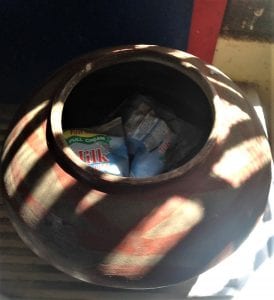When you think of your day-to-day life, it’s easy to disregard all of the technology at your fingertips that make each day run smoothly. Even more, we often associate technology with urban metropolises rather than rural villages. Whether connected to health, food, transportation, or any other part of our lives, technology has become integrated into daily routines around the world. When stepping into either these metropolitans or villages, if we take a step back we can identify innovations that make routine activities easier. I especially found that it can be easier to recognize these innovations when they are new or different rather than routine. Stepping into a new community in rural Tanzania, I was confronted with novel and innovative technology, designed precisely to make life easier.
Water
In rural areas decentralized water systems often replace public water municipalities, commonly grown alongside growing demand. These distribution systems can either be designed as raised tanks or constructed reservoirs at higher elevation, both of which can accommodate irregular electricity when designed as gravity-driven systems. In addition, by bringing an accessible water source closer to people’s homes, the burden of daily water collection is reduced and both time and energy can be saved. And ultimately this community-scale technology provides better access to an essential resource, safe drinking water.
Energy
In areas where electricity can be intermittent, power surges and disruptions take a toll on household electrical appliances. Combining the shortened lifetime of devices with their price, diminished functionality, and even the running-cost of drawing significant power, sometimes the effective technology is the simplest available. One example of this low-tech innovation is the earthenware cooling pot, which can be heard called a “local refrigerator.” The principle behind this technology is evaporative cooling; when water in the pot evaporates, energy is drawn from surroundings creating a local cooling-effect. Users can take advantage of this evaporation by placing a storage pot covered in a damp cloth in the cooling pot, essentially cooling the foods stored within. In hot environments, this technology can prevent foods from rotting prematurely at a fraction of the cost required to buy and run a full-scale refrigerator.
ICT
In addition to hardware, ICT solutions have spread rapidly through Tanzania as mobile phones become more accessible to rural populations. Innovative online platforms such as Ninayo are extending the online marketplace to rural village. This ICT4D solution uses crowd-sourced data to create visibility of crop prices and demand, aiding both farmers selling their crops and processing organizations choosing crops to purchase. Through this online connectivity, organizations such as Ninayo are both enabling farmers to boost their selling-power and preventing crops from rotting while they’re waiting to be sold.
Take-aways
After living in Tanzania for over two years, I saw the impact that locally-manufactured and innovative technologies have on daily life. Keeping food cool for longer, accessing water, and using app-based programs to boost crop sales are just a few examples. Overall, it is clear that technology is seeping into all aspects of life in Tanzania and around the world. From water to food and communication, technology is constantly enabling innovative ways to solve problems in our daily lives.


No Comments.